
Why did we eat this mountain? Because it was there.
Mr. Sato had a problem.
Recently, we’d heard that a certain restaurant chain based in the Osaka area has started opening up branches in Tokyo. This chain is famous for its delicious tuna sashimi, and so naturally our ace reporter, Mr. Sato, volunteered to go and eat some, since he’s far too industrious to pass such a tough assignment off on another member of our team.
Unfortunately, when he showed up at the restaurant, they were mysteriously closed. He then went to another branch elsewhere in Tokyo and was told that they still hadn’t received their shipment of fish, and so they weren’t seating any customers.
So like we said, Mr. Sato had a problem. His plans of eating tuna sashimi had hit a brick wall. Thankfully, though, a solution presented itself, and he was able to eat a mountain.
A mountain of sashimi.

Though it’s not the restaurant he’d originally intended to visit this day, a combination of fate, Mr. Sato’s rumbling stomach, and his wandering feet led him to the entrance to Maguro Soma Suisan, a restaurant in Tokyo’s Ginza neighborhood. The more important geographic detail, though, is that Maguro Soma Suisan is directly managed by a wholesaler at Tokyo’s Toyosu fish market, the Tsukiji successor which now serves as Japan’s premiere entry port for high-quality seafood, and in particular delicious sashimi.
Even better, Maguro Soma Suisan specializes in maguro (tuna), which is exactly what Mr. Sato had his heart set on eating. Honestly, even if he hadn’t already been craving maguro, he would have been unable to to think of anything else after seeing the sign in front of Maguro Soma Suisan filled with photos of their maguro mountain bowls.

Seriously – they have names like “Fujisan” (Mt. Fuji), “Qomolangma” (a.k.a. Mt. Everest), and “Big Mountain.”
Now thoroughly convinced that this was fate, Mr. Sato stepped inside, promptly ignored the other menu items like grilled salmon and sea bream, and immediately ordered the Big Mountain.

As he waited, though, Mr. Sato tried to keep his expectations from getting too high. After all, sometimes restaurants have gorgeous-looking food photos in their menus, only for the real thing to not quite measure up. He was happy to learn, though, that Maguro Soma Suisan is very honest about what you’re getting.
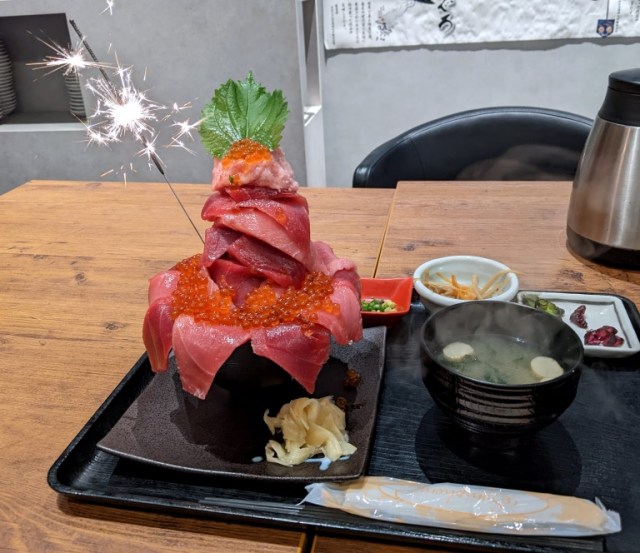
If anything, the real Big Mountain is even bigger than the one shown in the photo!
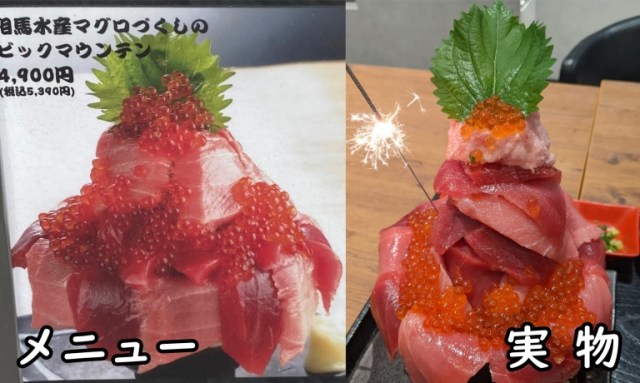
Also, the Big Mountain in the photo didn’t have the fireworks that the real one did.
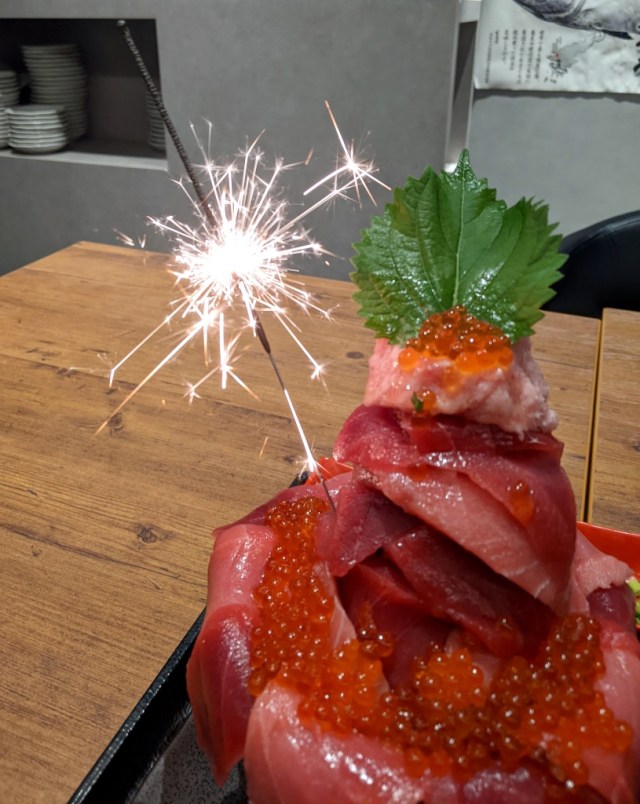
Mr. Sato felt a little self-conscious about the sparklers, but let’s be honest here. With or without pyrotechnics, the Big Mountain is so huge that there’s no way it’s not going to attract attention from your fellow diners when the waitstaff brings it to your table. You may as well give everyone a show.
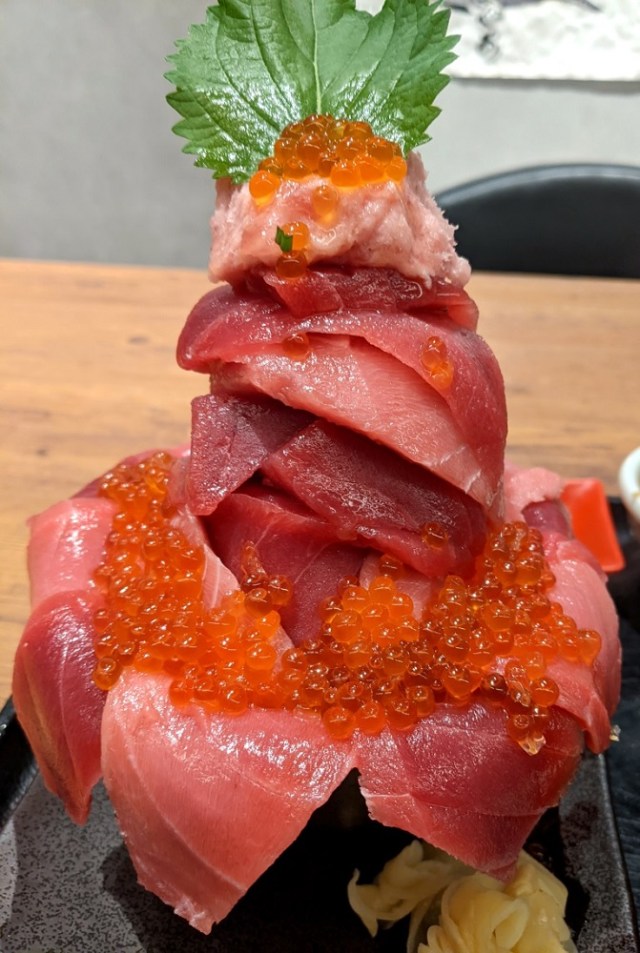
Let’s take a moment to admire the gastronomic geography of the Big Mountain. At the peak you’ve got a leaf of shiso (Japanese basil) and a sprinkling of ikura (salmon roe) looking like fallen snow atop a dollop of negitoro (diced tuna).
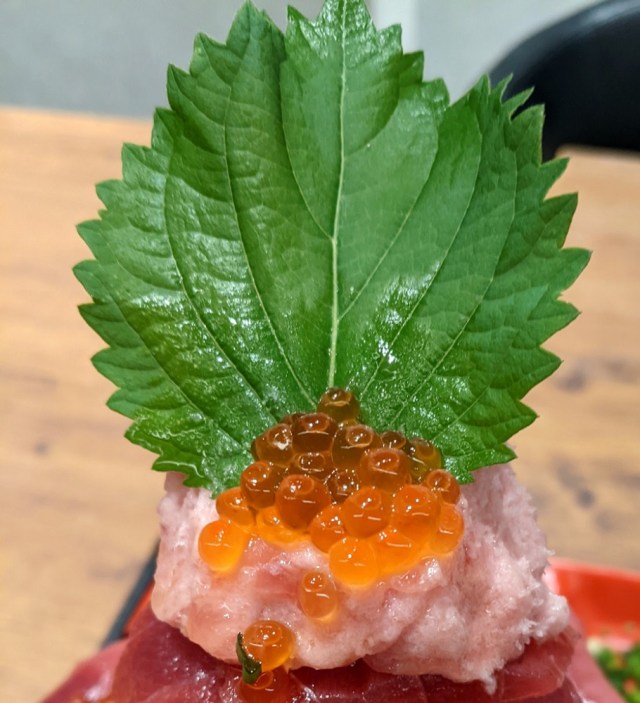
Underneath that you have a spire of stacked slices of akami (lean tuna) and chutoro (extra-fatty tuna).
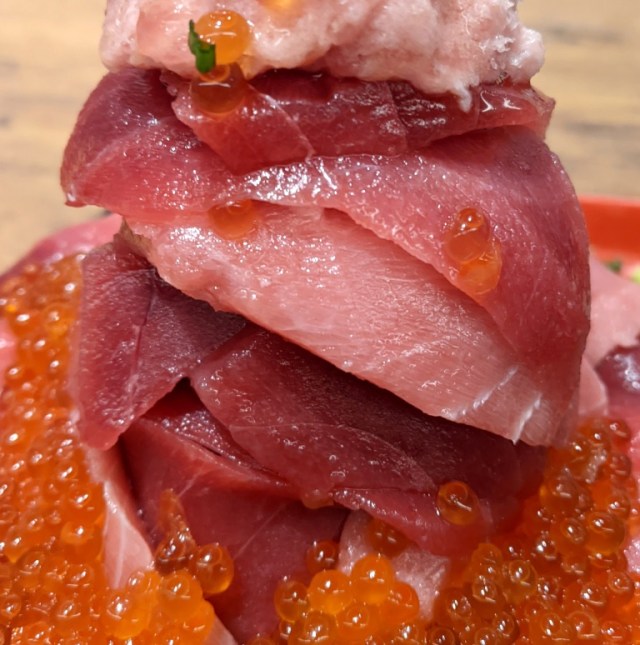
Then, where the base widens, you have more ikura and tuna, so much so that it completely obscures the rim of the bowl.
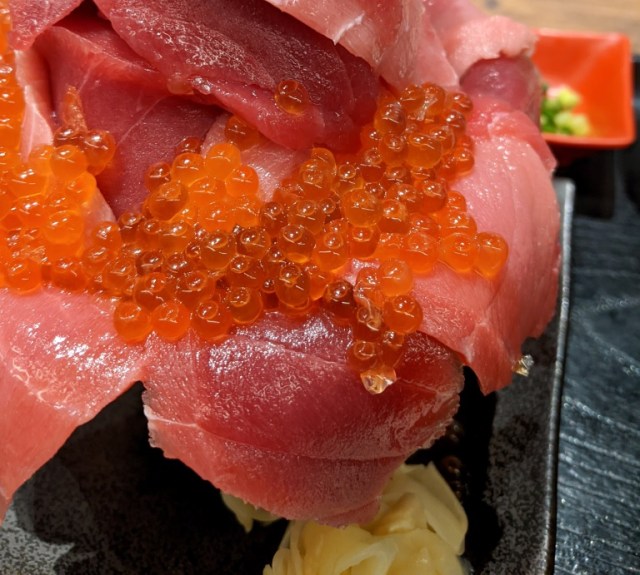
Unlike climbing a mountain, eating the Big Mountain means starting at the top. From the very first bite, Mr. Sato’s palate was rewarded with thick, high-quality cuts of fish, befitting Maguro Soma Suisan’s affiliation with a wholesaler at the world’s most discerning sashimi market.

The chutoro was rich and delicious, and so soft that it practically melted in his mouth.
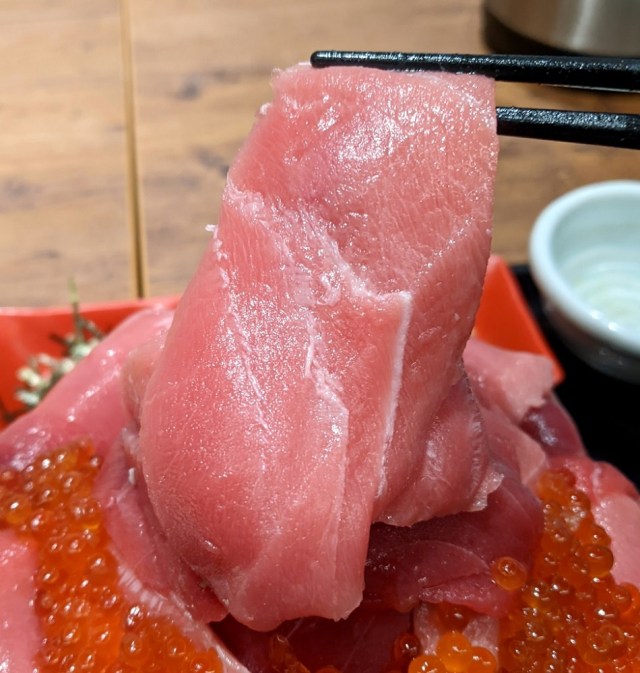
Because of the way it’s structured, you pretty much have to eat the Big Mountain top-down. This doesn’t mean, though, that the good pieces of fish are only found at the top, and they pad things out with lower quality maguro as you make your way down. On the contrary, not only is the flavor excellent throughout, the cuts of tuna actually get thicker as you make your way down, since these are load-bearing sashimi slices that have to provide stability for everything that gets piled on top of them.
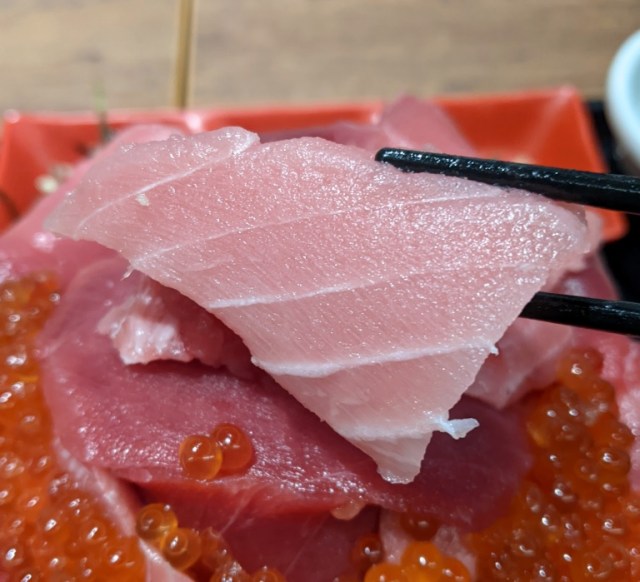
It was about this time that Mr. Sato started to wonder about something: Does the Big Mountain have any rice?
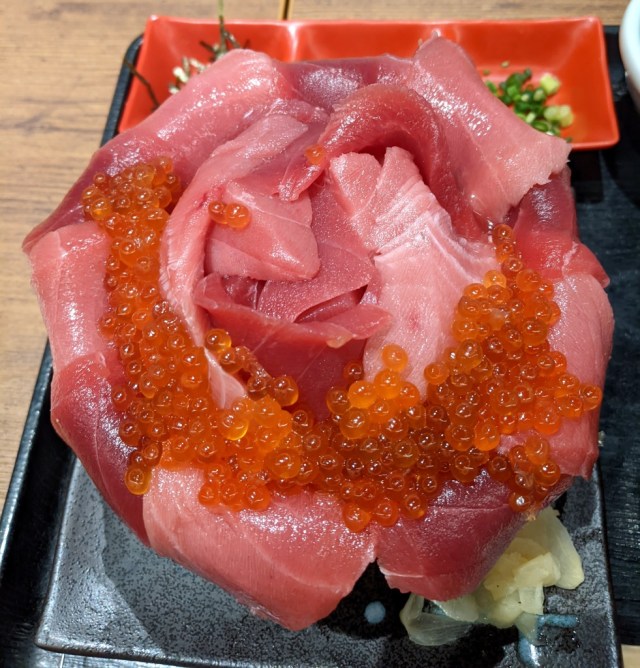
He hadn’t seen any yet, and while he had no complaints about having so much maguro, a mouthful of rice would make a great complement to all the sashimi decadence right about now.

A quick excavational expedition, though, confirmed that yes, there is indeed some rice under all that tuna.
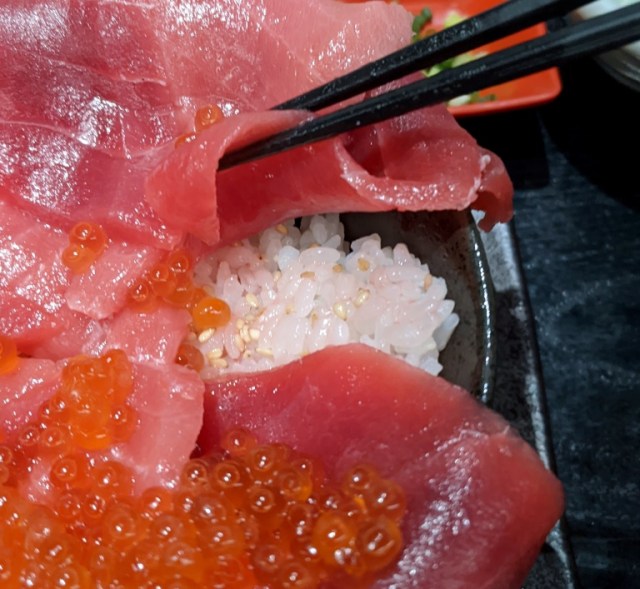
Now Mr. Sato was able to get mouthfuls of tuna and rice in the same bite, which felt like little pieces of maguro nigiri sushi.
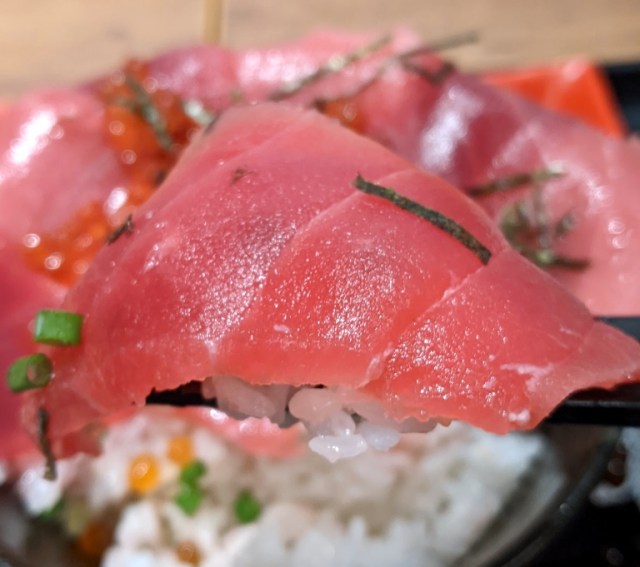
Finally, using a spoon, he was able to scoop up the last of the ikura, because you don’t order something this huge without wanting to eat as much as you possibly can.
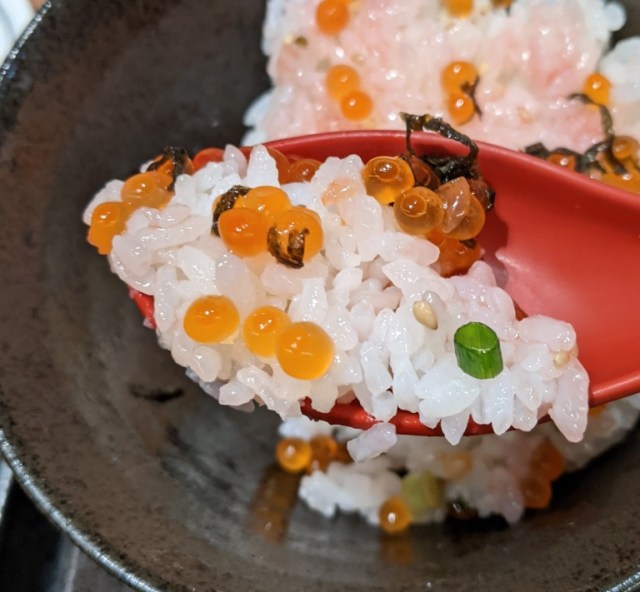
At 5,390 yen (US$39.95), the Big Mountain isn’t cheap, but considering it’s enough tuna to satisfy several meals’ worth of maguro desire, and the quality of the fish, we can’t say that it’s at all a bad deal. Maguro Soma Suisan also has more rationally sized lunch sets for just 1,300 yen, so if your friends don’t have the same shark-sized appetite for maguro that you do, they’ll still be able to find something that better fits their stomachs. And if somehow you’re still feeling hungry after eating the Big Mountain, maybe this honey toast with two liters of ice cream is what you need for dessert.
Restaurant information
Maguro Soma Suisan (Ginza branch)/ まぐろ相馬水産(銀座店)
Address: Tokyo-to, Chuo-ku, Ginza 7-2-saki, Ginza Korido 1st floor
東京都中央区銀座7丁目2-先 銀座コリドー1F
Open 11 a.m.-9 p.m.
Website
Photos ©SoraNews24
● Want to hear about SoraNews24’s latest articles as soon as they’re published? Follow us on Facebook and Twitter!

No hay comentarios:
Publicar un comentario